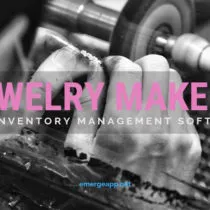4 Simple Steps to Take your Business Online

What does the Silk Road, Suez Canal, Panama Canal, Cape of Good Hope and Singapore have in common?
Well, these are monuments that stand testament to the role of commerce in society.
Since Man has learned to travel we have also learned to trade, and we can safely agree that the trading process has not changed much till today.
The Internet as we know it today has revolutionized the trading and wholesale distribution industry.
Now, businesses need to learn how to take your business online through eCommerce, websites, and content marketing.
When customers are more used to the convenience of buying and selling online, businesses need to change in order to survive.
Here are some steps you can follow to start building an online store, to reach out to more potential customers all around the world.
Let’s Take your Business Online
1. Identify which items you can sell online
Not all products are viable to be sold online, but that shouldn’t stop you from listing your goods and services online.
In our experience, doing this has proven to be a good source of lead generation.
Interested customers will know where to look to find what they want, and might even contact you for a possible sale.
As the Internet is a public space, what you post online is often visible to many parties, including your competitors.
Many businesses fear of taking business online due to competitors ‘spying’ on their pricing and products.
The solution? You can simply encourage interested customers to call you for quotations by listing your number clearly and putting a ‘request for quotations’ option on the website.
You can simply encourage interested customers to call you for quotations by listing your number clearly and putting a ‘request for quotations’ option on the website.
You can simply encourage interested customers to call you for quotations by listing your number clearly and putting a ‘request for quotations’ option on the website.
You can simply encourage interested customers to call you for quotations by listing your number clearly and putting a ‘request for quotations’ option on the website.
2. Ensure you assign your product SKU (Stock Keeping Unit) for all your products
Different companies purchase stocks from different suppliers or perhaps an individual supplier.
If you are purchasing from multiple suppliers, each supplier may have different SKUs for their products. To avoid confusion, it is much better to have your own SKU on all your products.
Many companies practice identifying identical products from different suppliers differently.
However, when taking your business online, having an identifier for suppliers is an issue as it will cause product synchronization problems.
Hence, having a single SKU for each individual product is advisable as it helps you to standardize your products you are selling both online & offline.
3. Find a suitable eCommerce platform or eCommerce builder
Think of this as finding a new location and shop space to sell and display your goods.
There are various aspects to consider when choosing your new shop location: ease-of-use, features & price and many others.
Most importantly, they must be comfortable to use and adapts to your style of doing business.
Here are some reviews of the most popular eCommerce platforms that can help you take your business online:
Pros: Simple to use & setup. No programming skills needed. Awesome themes
Cons: Great for first time eCommerce entrepreneurs, it can be difficult to keep up with you when your eCommerce business expands.
Pros: Base versions are free. Large feature selection plugin. Great for eCommerce business which is looking to scale fast.
Cons: Complicated & will require PHP coding knowledge to set it up
Choosing a suitable marketplace is highly dependent on your product and target customers.
Global marketplaces such as Amazon & eBay are good to start with if you are selling consumer products.
Today, there are plenty of marketplaces for all sorts of products in all regions.
4. Build your fulfillment process
When you are starting your business online via eCommerce, you will need to decide whether you are selling locally in your region or abroad to different markets. Which fulfillment process depends on your size/price of your products & region you are selling to.
Below are a few options for fulfillment options:
- On demand last-mile logistics companies
In recent years, there are plenty of apps and last mile companies that has been set up to serve the eCommerce last-mile market.
It connects eCommerce merchants with delivery drivers to pick up and deliver the parcel to their customers and usually only locally in the region. Fees are higher if your parcels are larger. Hence, if your customers are abroad, this option may not be available to you.
- Local postal services
Local postal services companies has been given a new breath of life with the emergence of eCommerce as a viable industry.
Local postal services have been serving eCommerce business for some time now & is still the most commonly used delivery for both local & offshore customers.
However, if your parcel size is relatively large, the fees may be unreasonable & pricing may be uncompetitive to your customers
- Courier companies
This is generally used by B2B delivery of goods abroad. If your parcel is relatively expensive and time-sensitive, the courier would be the best option although it is pricey.
Conclusion:
With many customers looking to eCommerce to fulfill their needs, many traditional merchants in distribution, wholesale, retail are looking for ways to sell online.
The cost to start selling online is extremely low and offline businesses should take advantage of it to add another sales channel to their model.
So, now you are ready to start your business online.
A last note:
Here at EMERGE App, we serve a wide range of businesses, both offline and online.
We are committed to helping small and medium businesses survive in this new economy.
If you do have any questions, require more knowledge, or even just to say hi, drop us an email at [email protected]. We would love to talk to you!



